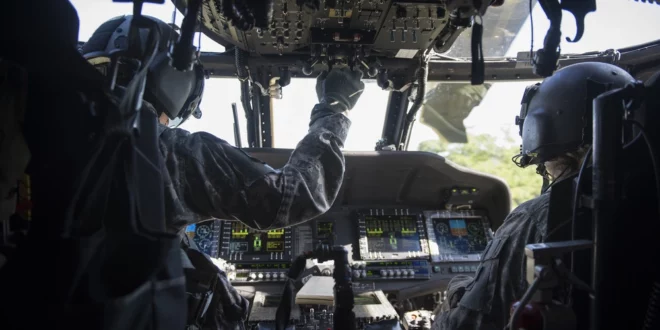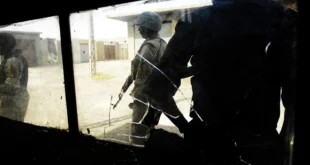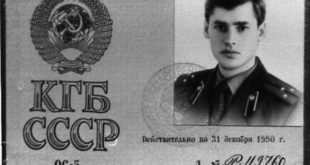by Fred A. Ganous, SGM, USA (Ret)
The departure point was LZ Washington in downtown Baghdad, which stayed busier than the Atlanta airport. The pilot in command was a Chief Warrant 4 who was well-trained in his aviation duties. He saw a convoy of five U.S. army vehicles come under attack. He quickly took the controls from the copilot, and dropped to an altitude level above the local buildings.
It was 2006 and the start of an all-reserve combat aviation brigade. This mission was identified as “Task Force Mustang.”

The pilot put his aircraft between the good and bad guys while clearing the building tops with his door gunners. Blowing everything from prayer rugs to house cats off the tops of these houses, he allowed our guys to regroup due to an IED explosion that disabled one of their vehicles.
As this senior warrant officer was operating the flight controls, he noticed his copilot tightly tucked in his seat. The copilot was a young lieutenant with much less time behind the controls.
The chief asked: “Are you hit? Why are you balled up like that”?
The lieutenant replied: “We are going to die here, aren’t we.”
The brash mouth chief said: “Shut up, sit straight and die like a man”! His statement wasn’t too profound; he smiled and continued flying.
Our job in Iraq was to provide support from any corner of the country we were needed. From working with special operators to the brave grunts who were feet on the ground, to carrying large sums of money or even civilian attire individuals with containers of the unknown – we were there. If it fits, we will take it if commanded to do so.
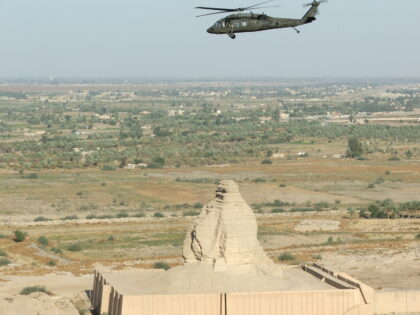
READ MORE about American forces in Iraq.
“Task Force Mustang” was formed for the sole purpose of controlling the aviation mission of the Iraq war. This effort was not only for our allies interested in suppressing third-world country dictators, but also for their many of their citizens who needed to be retrieved. This is where our country’s reserves got the call to fill in those spots. The call came to the Texas National Guard. This was the first time the army put together such an all-guard unit, the Texas Army National Guard’s 36th Combat Aviation Brigade.
As a UH-60 Blackhawk helicopter crew chief with Company A, 1-131st Aviation Regiment, I was part of this makeup. Our company’s mascot, embellished on the engine cowling of every one of our aircraft, was none other than a “skull and sickle” design. We were the “Death’s Angels,” full of ego and testosterone. This company of misfits was well versed in doing any mission that was assigned to them, and the leadership knew.
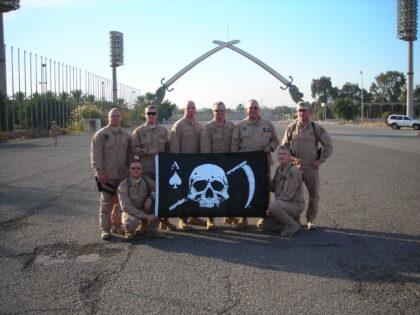
Our company had more enemies internally within our structure than the damn insurgents. Many leaders disliked us for how we did business, but when the dirty work had to be accomplished, they came calling. We carried passengers and cargo wherever we were instructed. This kept many soldiers off the ground from the harm of IEDs and anything else the insurgents put together.
The 36th CAB was comprised of over 46 states. Aircraft ranging from CH-47 Chinooks, UH-60 Blackhawk helicopters, and the AH-64 Apache attack helicopter. The mission went from general support to air assault insertions, which included special support missions of many infantry and special forces groups. Balad AFB, or Camp Anaconda, was known for its daily and sometimes hourly mortar attacks on the base. The base was nicknamed “Mortar Ritaville” due to the high explosives launched into our compound. Many secret missions were assigned to the 36th to be carried out under the veil of darkness to move VIPs with great confidence, knowing that their packages would safely arrive.
The 36th CAB was the most decorated combat aviation brigade of the entire Iraq war, and also set records of continuous flight time.
Individual awards consisted of one Silver Star for valor, 17 Distinguished Flying Crosses, one Bronze Star for Valor, and 55 Air Medals. There were 17 Purple Hearts.
These awards did not come without a cost of lives. The loss of the crew and passengers of the UH-60 Blackhawk helicopter “EASY 40” devastated the CAB. A total of 12 individuals lost their lives when it was shot down over Tarkhya, Iraq, on 20 January 2007. The crew of Company C, 1-131st Aviation Battalion lost not only fellow soldiers but also their company commander, first sergeant, and platoon sergeant. Trying to recover after this was difficult, but they knew they had a mission and performed it flawlessly.
Many other losses were dealt to the 36th CAB. We mourn the losses of life on that long grueling deployment.
As to the mission where the copilot thought he would die: they came home safely.
Later, we found out that a full bird colonel had tracked down the crew and thanked them for their bravery. They were informed they were going to be recommended for a Silver Star. Like everything else during a high op-tempo deployment, the idea to credit this crew was lost. The only thing that wasn’t forgotten was reprimands, and the leadership was always on top of these.
For their sacrifices, many of us would not be here today writing about their courage. I salute each one of them.
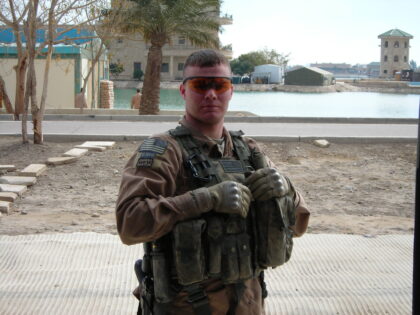
I want to dedicate this article to the memory of SGT Jason A. Arsenault. Sergeant Arsenault was an outstanding soldier who volunteered for deployments in Iraq from 2003-2007. He eventually lost his battle with PTSD. RIP my friend. ”REAPER 05”
Fred Ganous is a combat veteran of the Iraq war, and has spent his career in aviation.
 Soldier of Fortune Magazine The Journal of Professional Adventurers
Soldier of Fortune Magazine The Journal of Professional Adventurers


